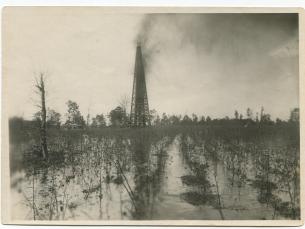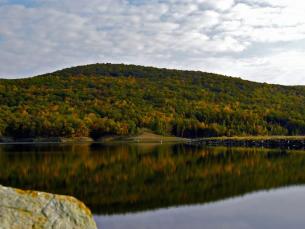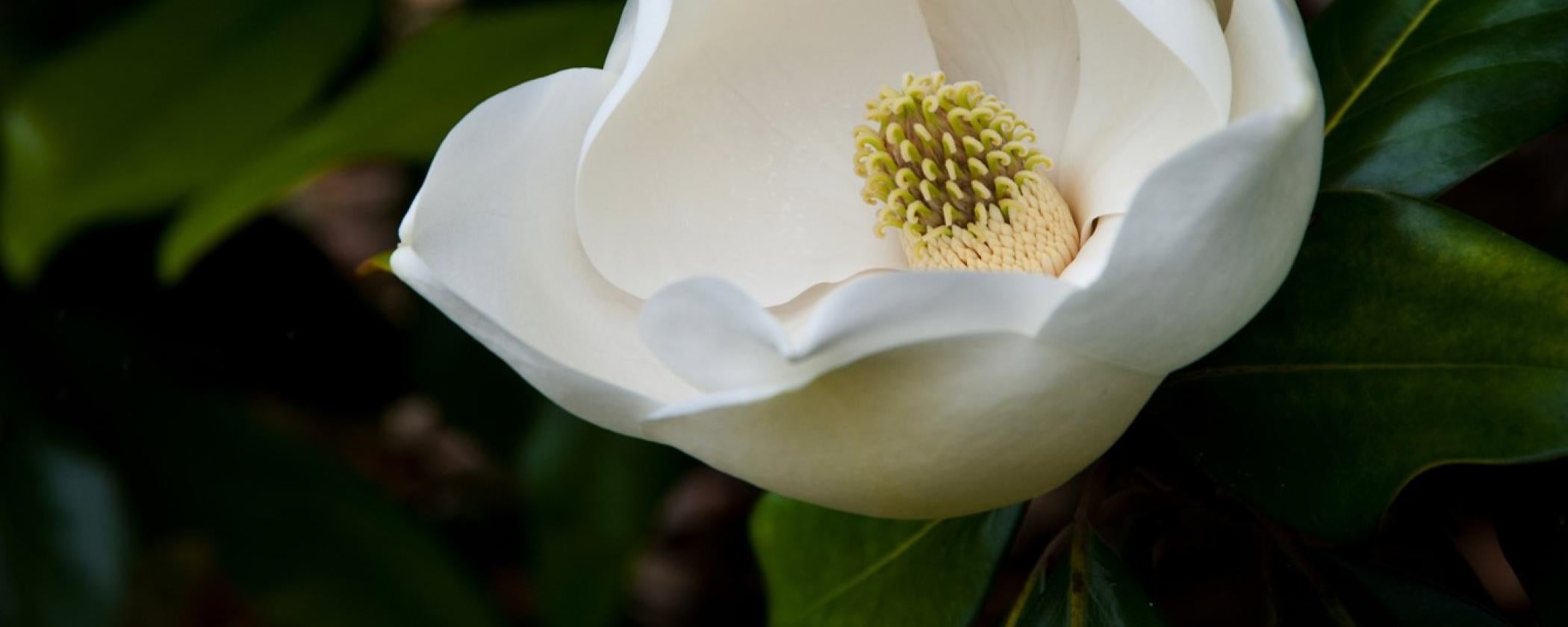
Photo Essay: Branches in Time
By: Leita SpearsHistoric Washington State Park in southwest Arkansas is well known as a historic village filled with preserved 19th-century homes and buildings. Besides these structures, you can also walk through town and explore a unique collection of living witnesses to the history of Washington: its many historic and champion trees.
These mighty, living specimens, with their tall trunks and wide-spreading branches are difficult to capture in one photograph. So, in this photo essay, you can get a glimpse of a few of the most famous trees and click on links to our “Tour of the Town” to find out more about the buildings they are near. Then hopefully you can make plans to come see the town and trees for yourself here in Washington, Arkansas!
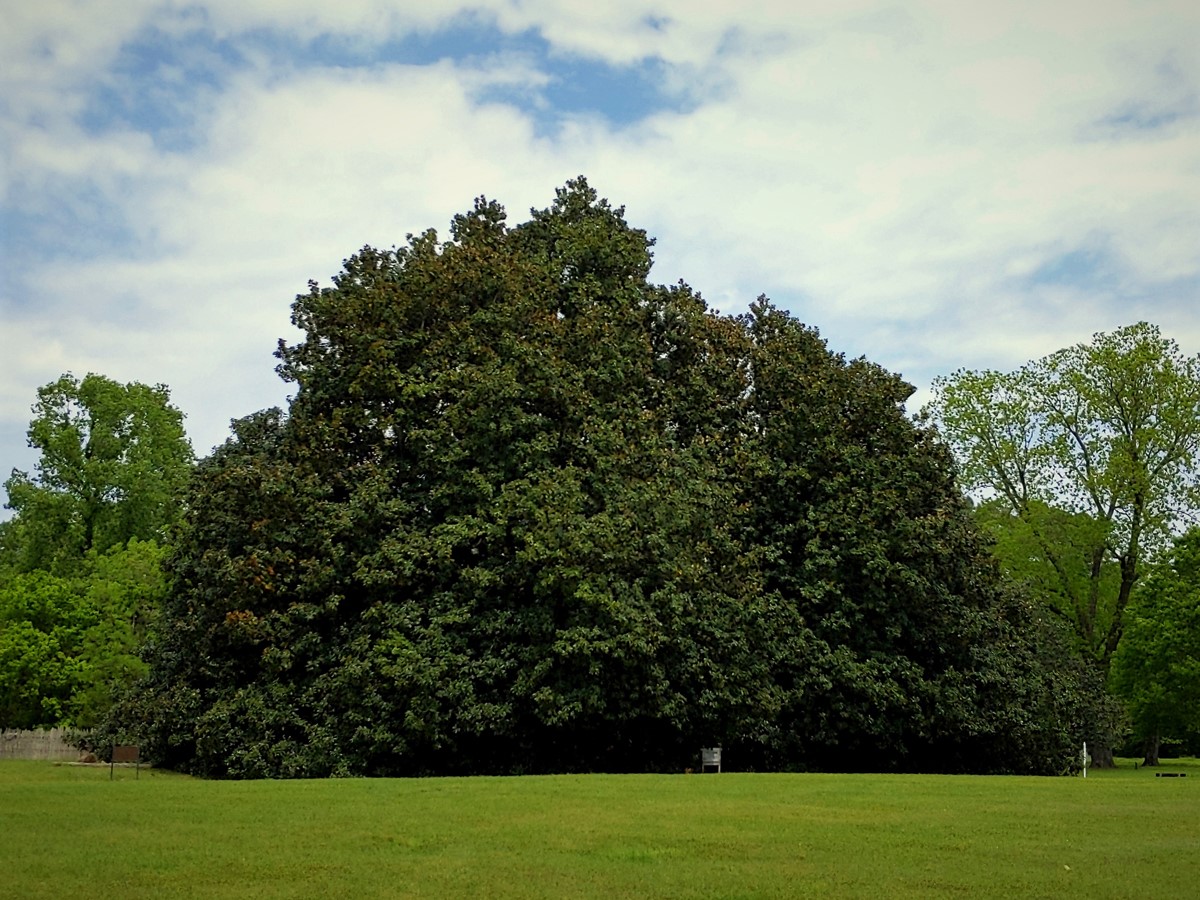
HISTORIC WASHINGTON GIANT MAGNOLIA
This tree is certified as one of the largest magnolias in Arkansas. Planted in 1839, it is near Grandison Royston's law office, which was on the same lot as the tree. The Royston Log House was moved from Royston’s plantation outside town and is now on the site with the tree.
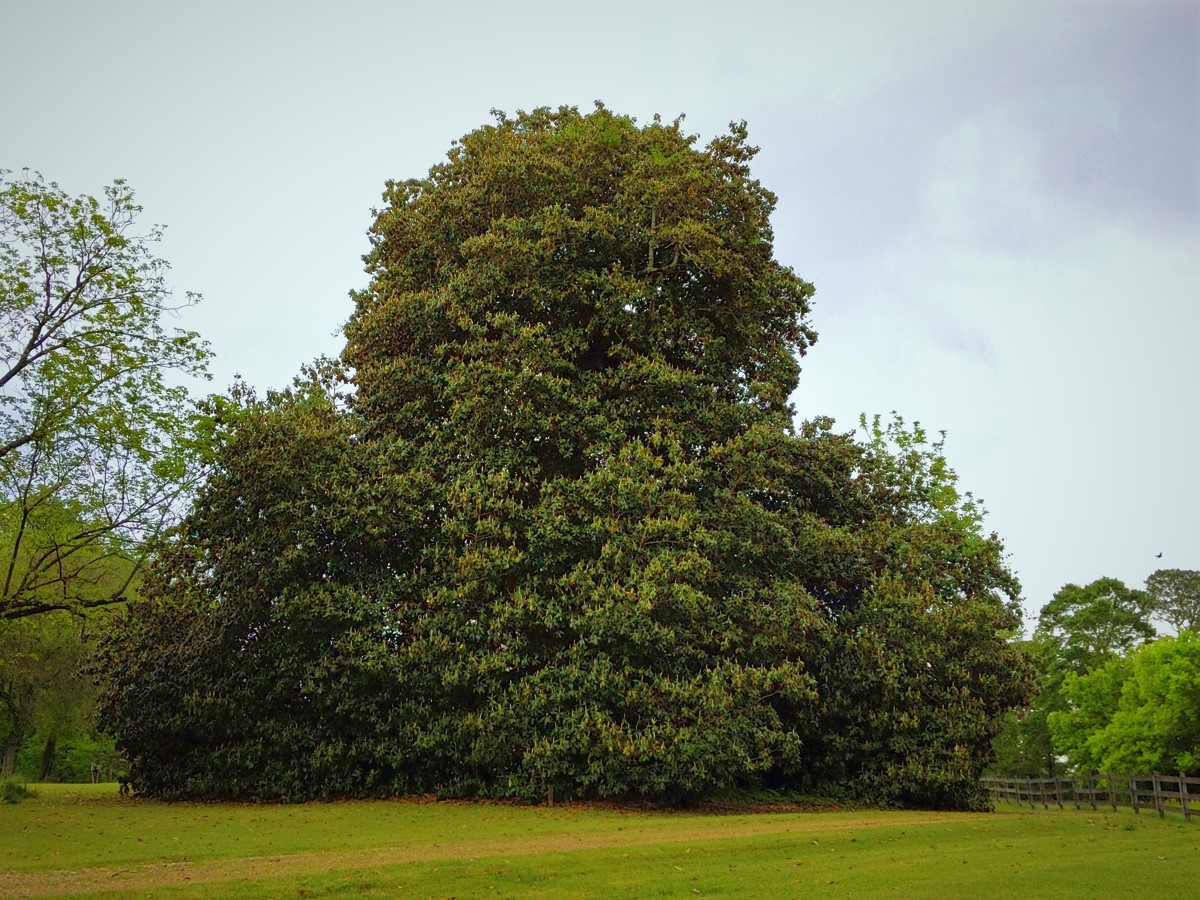
ROYSTON TOWNHOUSE MAGNOLIA
This magnolia was planted around 1845. The same year that General Grandison D. Royston completed his townhouse, which is now a tour site in Historic Washington State Park. It is not on the National Historic Register but is associated with Grandison Royston in the same way as the giant magnolia (above) at the Royston Law Office site.
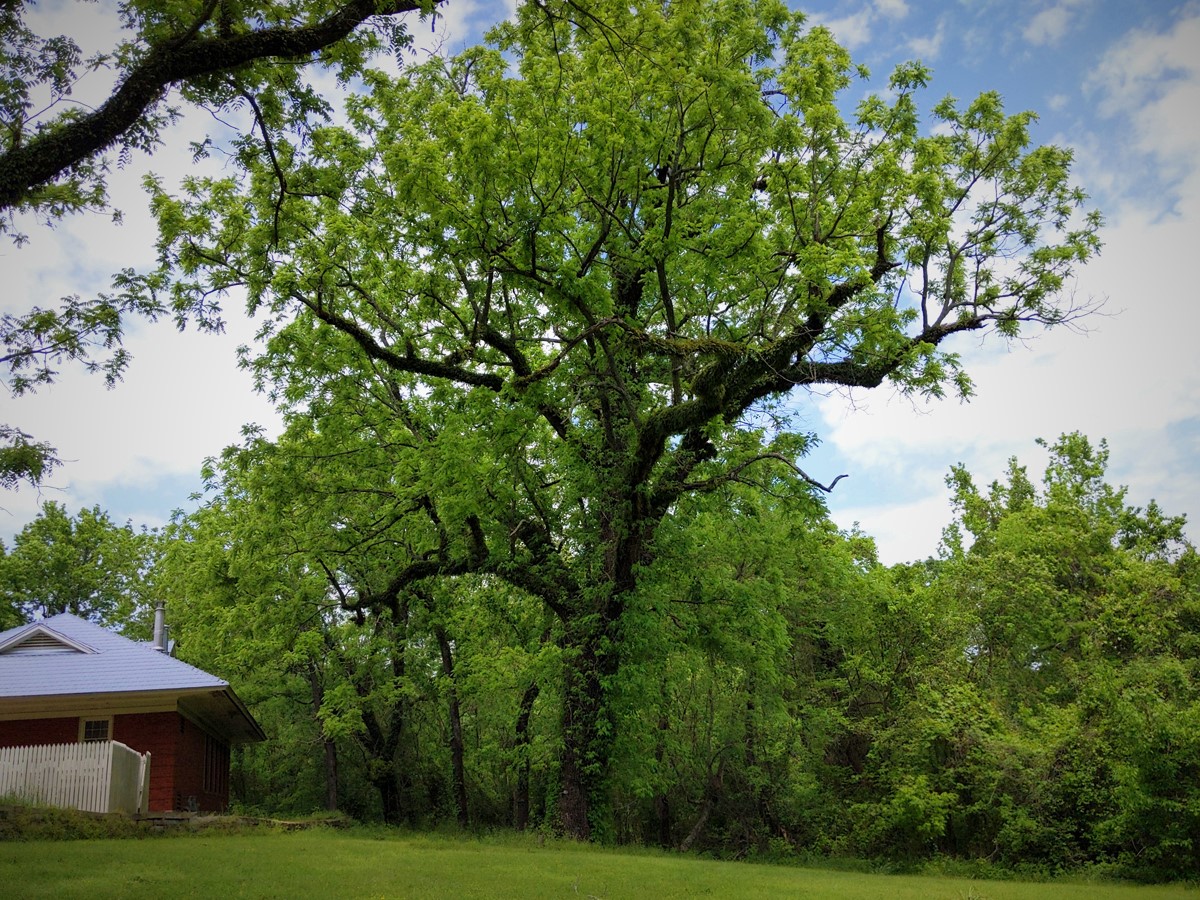
BLACK/BOWIE BLACK WALNUT
This walnut was in a grove of black walnut trees in the area close to the site of the original James Black's blacksmith shop, where the famous Bowie knife was made. James Black primarily used black walnut wood in the handles of the Bowie and Carrigan knives he made. This surviving member of that grove stands today within a block of the reconstructed blacksmith shop location.
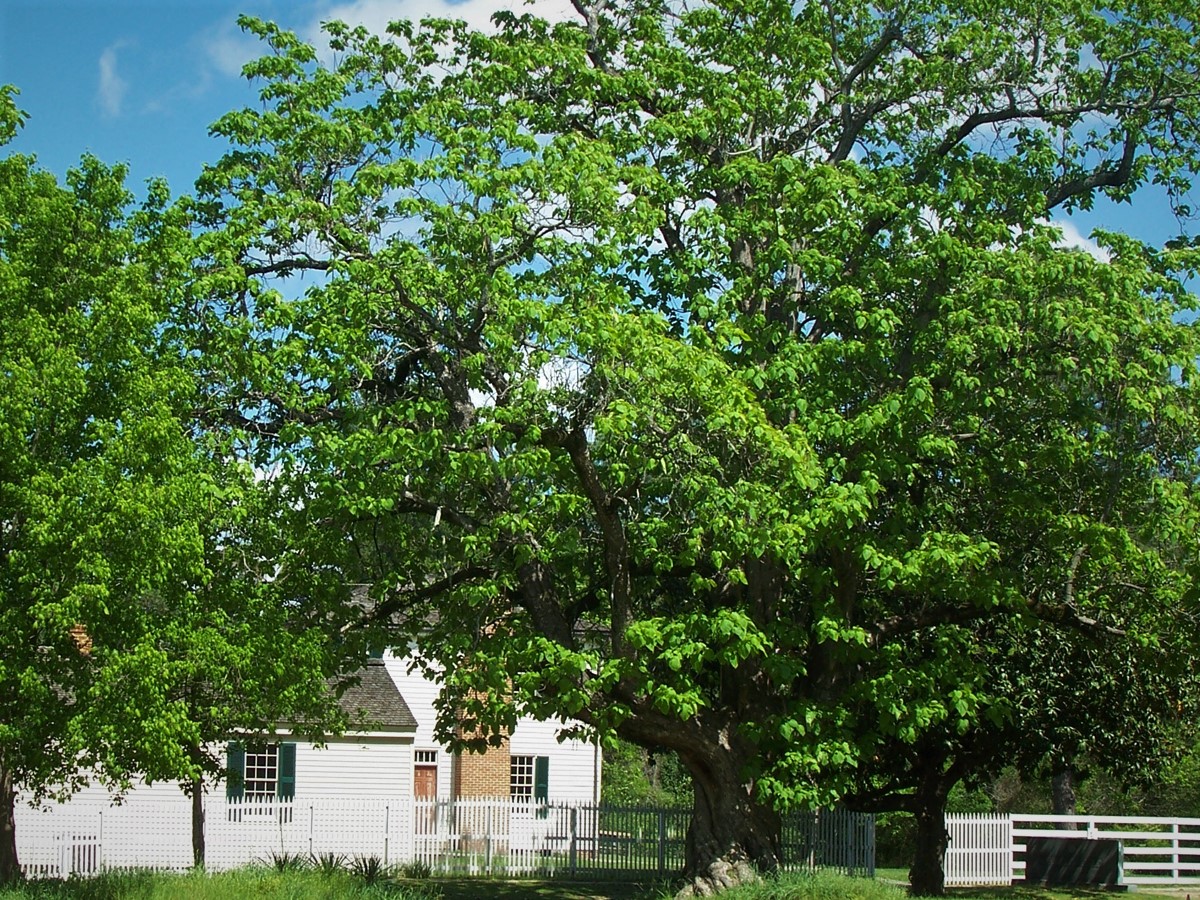
MAIL CARRIER SMITH SOUTHERN CATALPA
In 1831, fourteen-year-old John H. Smith carried the mail 180 miles from Washington, Arkansas to Natchitoches, Louisiana. On his route, he passed catalpa trees growing along the Red River and one day he filled his pocket with the fluffy seeds. When he returned to Washington with the mail, the seeds were scattered in the old courthouse area, and that was the beginning of the catalpa trees in Hempstead County. You can see this and several other long-lived catalpas around town today.
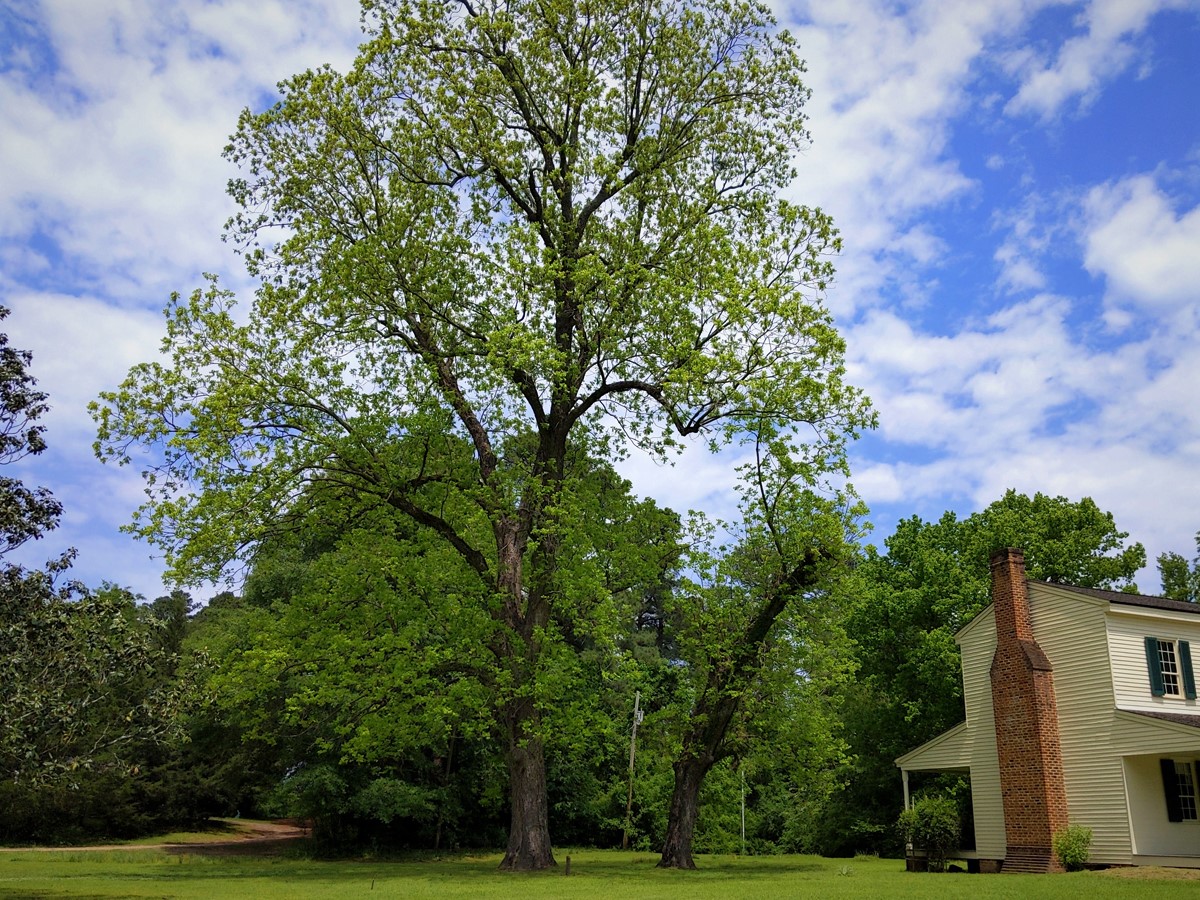
ABRAHAM BLOCK PECAN
The Abraham Block Pecan is located on the grounds of the historic Block-Catts House in its original location. Arborists have estimated that the tree could date back to the time of building this house or could even predate the house. Block’s family moved into the home in 1828.
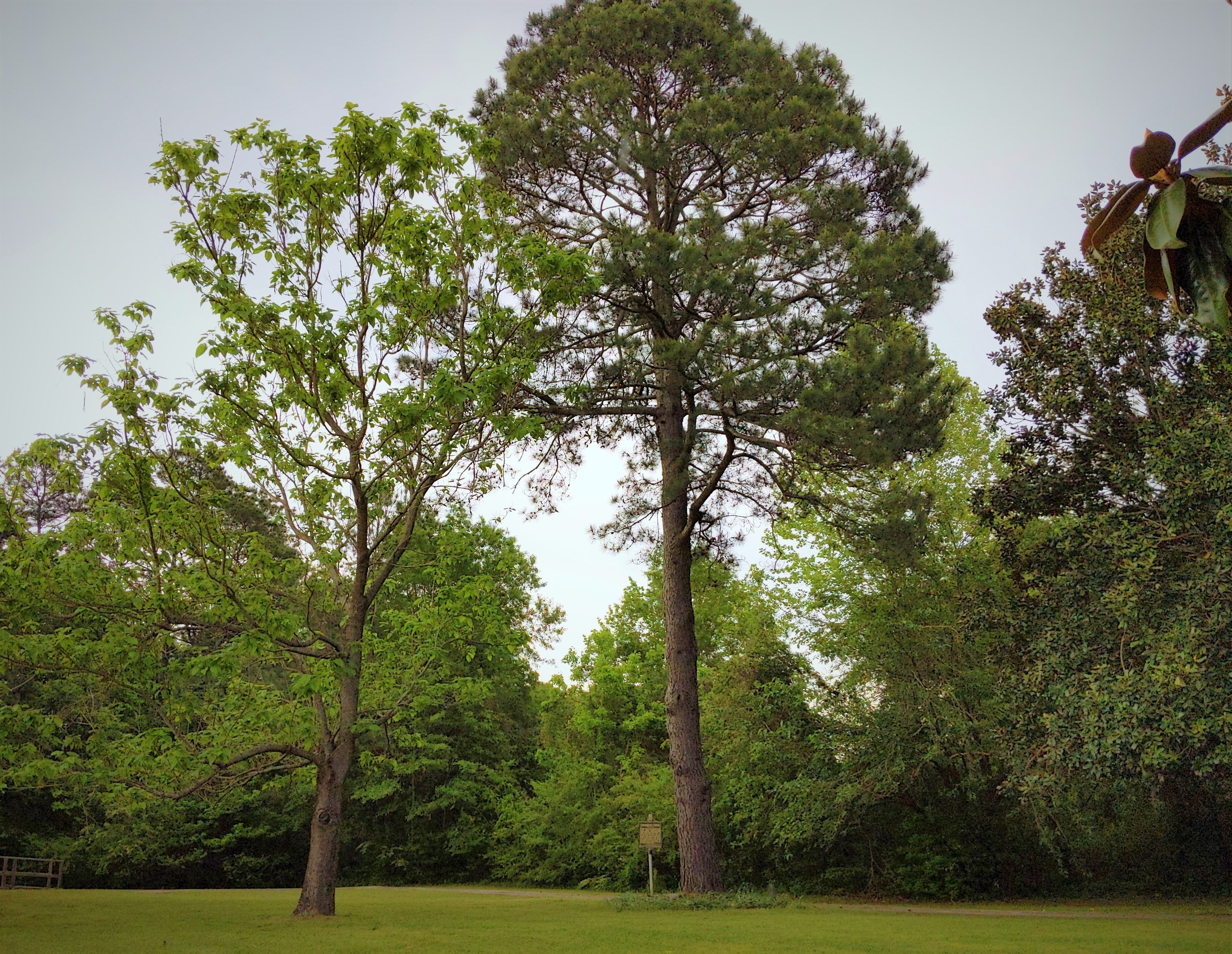
APOLLO 14 MISSION MOON TREE
This tree has out-of-this-world history, and yet it is planted right here at Washington Historic State Park! As a loblolly pine--Arkansas’s state tree—this is one of four “moon pines” given to our state. Only two remain living.
These seeds were propagated by the U.S. Forest Service and distributed during a nationwide bicentennial planting in 1976. During the Apollo space flight, the seeds were carried by Astronaut Roosa, who formerly worked for the US Forest Service, to test the effects of gravity on the germination of seeds. The moon pines were planted on March 15, 1976.
Before knowing this story, you could easily walk past this tree and barely notice it – pine trees are plentiful in south Arkansas. But now if you stood at the base of this tree—now that you know its history—what would you wonder about?
These historic and champion trees are witnesses to history here at Historic Washington State Park.
Their branches in time can spread over you on your visit. You can take your own photographs and share the fame of these witnesses of history. Also share your experiences and observations on social media and tag us with #ARStateParks.
Are you inspired to discover more about Famous and Historic Trees? Visit Arkansas Famous and Historic Tree Program (AFHTP).

